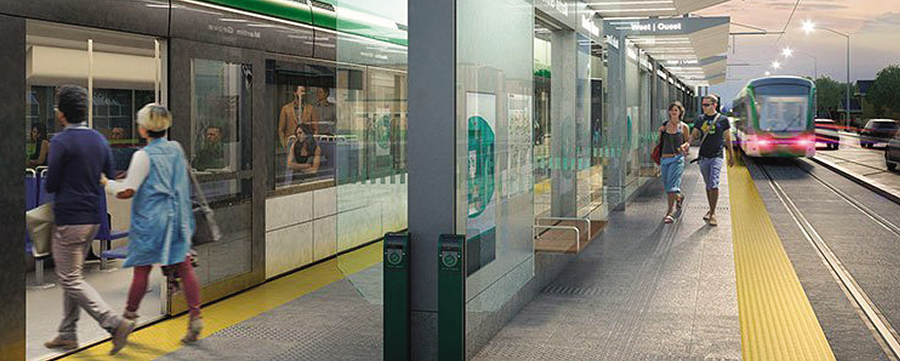
By Al Ruggero
For anyone who recalls walking or driving along Finch Ave West before most of the construction began in 2019, there is no question that the LRT has brought irrevocable change to the Finch West corridor.
The roadway has been dug up to replace sewers, move utility lines, hydro, and other services, curbs and sidewalks dug out to be re-aligned. Apart from the demolition, much of the attention is about what is new that wasn’t there when the project started. This of course includes the placement of iron tracks in the middle of the roadway, cradled in a raised concrete guideway where the vehicles will travel, and the appearance of pre-fabricated canopy walls at the newly constructed platform stops.
If you travel east of Highway 400, you will likely catch a glimpse of the Light Rail Vehicles on continuous test runs. Above them you’ll notice that they’re tethered to their overhead catenary wires, that bring back images of the older electric streetcars once common in downtown Toronto. Once the system is complete, electricity will power the fleet of 19 cars. What is less obvious at this time is the impact that the completed LRT road reconstruction will have on the pedestrian experience.
Behind the scenes, the Emery Village BIA has, from its inception, been involved with creating an enhanced pedestrian experience, inclusive public spaces, and the application of thoughtful designs and features within the public realm that drives our mission forward.
Recently, staff at the Emery Village BIA met staff from Metrolinx and the Mosaic Transit teams along with designated City staff to discuss streetscaping and the installation of BIA features along the Finch West corridor within the BIA boundaries.
Back in 2014, Metrolinx had introduced their plan to build the Finch West LRT along Finch Avenue from Highway 27 to Keele Street where the terminal would connect with the newly built Spadina subway extension to Vaughan.
The project was to be tendered as a Private-Public-Partnership with the winning consortium to be responsible for the design, construction, and structural operations of the LRT.
Supported by city staff, the BIA committed resources and staff time to meet and convince Metrolinx of the merit of revisions to their initial pre-bid plan and to the inclusion of enhanced city standards to restore much of what was to be removed for construction, while installing additional BIA features and elements to the streetscape. More specifically, the BIA was interested in the inclusion, where possible, of pedestrian lighting, street furniture such as benches, planters, and unit pavers in areas where grass would not thrive while avoiding concrete redundancy and to better define public space. In essence, its these integral components that make for pedestrian-friendlier streets and increase the ‘footfall’ for local businesses.
Local residents, business and property owners have shared in the frustration, disruptions, and traffic congestion related to the ongoing construction of the LRT. However, once completed, the LRT, as a higher order of transit, will have been a catalyst for revitalization and an opportunity to generate economic benefits. At the BIA we look forward to the near-term implementation of the plan to complement the street aesthetic, and create a vibrant environment for pedestrians, local businesses, and residents in the Finch corridor.














